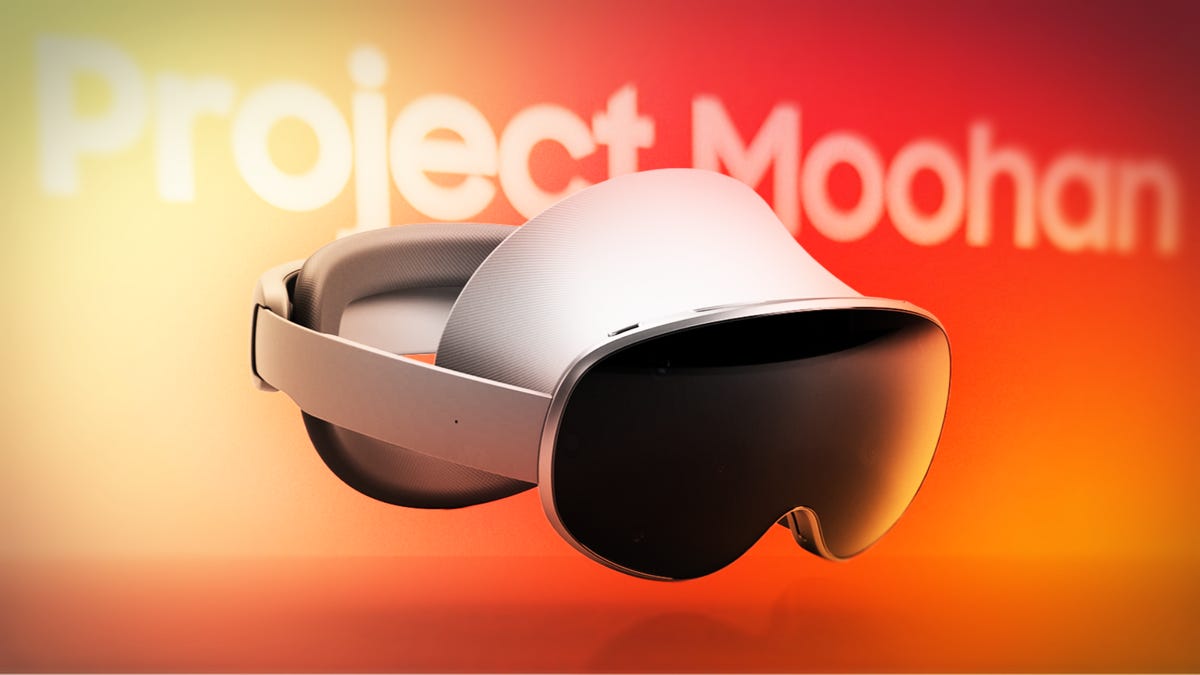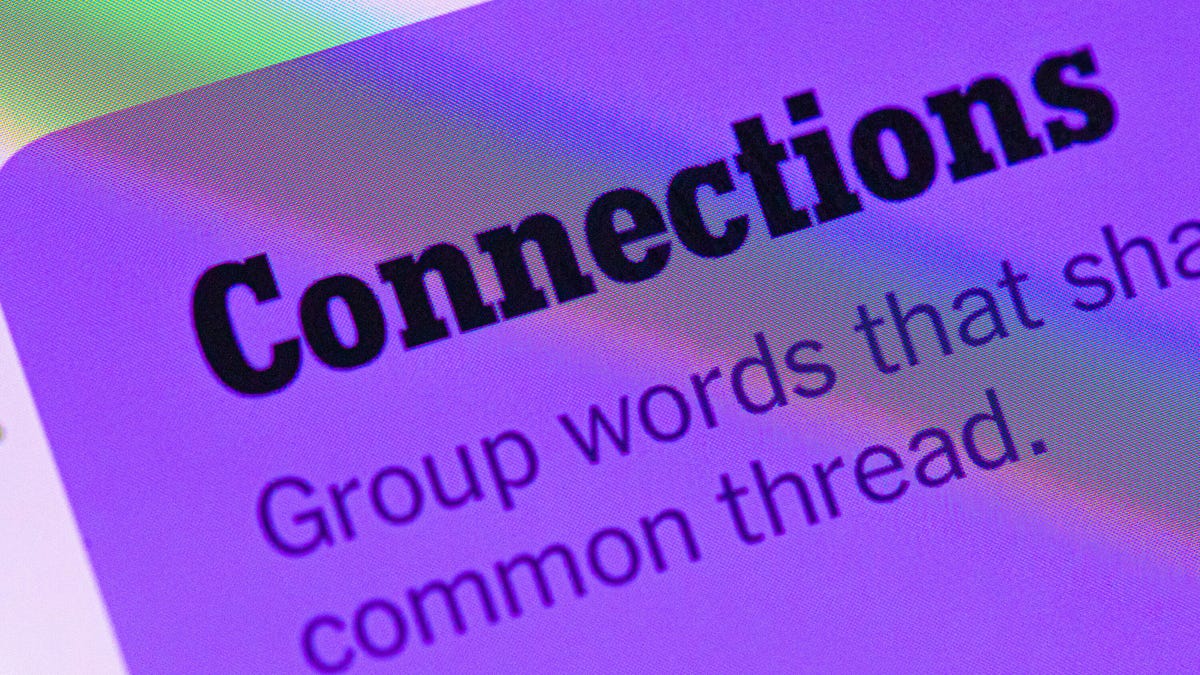Technologies
Google and Qualcomm Tell Me That Gemini Will Be Project Moohan’s Secret Weapon
How much closer are we to smart glasses rivaling Meta’s Ray-Bans?

While Meta’s Quest line of headsets has dominated the virtual reality space, mixed reality — using digital displays overlaying the real world — is a new frontier that’s just starting to be explored, going beyond the new Meta Ray-Ban Gen 2 to devices more akin to the Ray-Ban Display glasses. That’s where Google’s Project Moohan MR display aims to make headway. Unlike its prior efforts in the space, like Google Glass, the company hopes to gain an edge by partnering with Qualcomm and Samsung to bolster its chances.
At the Snapdragon Summit 2025 in Maui, I sat down to chat with Sameer Samat, Google’s head of Android, and Alex Katouzian, Qualcomm group general manager of mobile, compute and XR, to check in on Project Moohan and how the broadening of Android and Gemini coalesces with their collaboratively built headset. Which, despite CNET Editor at Large Scott Stein getting hands-on time with an early version of it last December, is still in development.
«We’re super excited about the device coming along really nicely,» Samat said. «We’re definitely getting closer.»
It was clear to Snapdragon Summit attendees that Project Moohan is still in development. The headset was quietly tucked into an easily missed corner of the event, shown off for only a couple of hours under glass and out of anyone’s hands. But Samat was bullish about the progress made in the last year, which has «subtle but very important refinements to the hardware,» he said.
Read more: You Got Your Phone OS in My Laptop! Here’s How Android and ChromeOS Will Merge
Design-wise, Samat explicitly pointed to improvements in the weight balance, ensuring the ergonomics are correct and that the light ingress is where it should be. Where the weight is balanced is crucial in the design of smart glasses that are expected to be worn for hours at a time. When the Apple Vision Pro launched in early 2024, CNET’s Stein noted that the headset felt top-heavy after only half an hour when using the standard single strap. However, using the dual strap was more comfortable, but, in his words, «Looks like the headband on my CPAP machine.» In summary: «A bunch of changes there that I don’t think you see when you look at it, but when you put it on from before and after, I think people would very much notice,» he said.
«I saw early prototypes until now, big difference,» added Katouzian. «I think the weight and the balance is really good and mechanically very well designed.»
Project Moohan uses Qualcomm’s XR2 mixed reality chip. The company worked with Google and Samsung to optimize everything, Katouzian said.
The software has come a long way, Samat continued, and he was quick to affirm that there’s been a lot of refinement in incorporating Gemini into the headset. That loops Project Moohan into the drum Qualcomm and Google were beating throughout Snapdragon Summit 2025: the Gemini experience that uses multiple large language models to answer queries will be an increasingly significant part of using devices, from phones to laptops to headsets, going forward.
«What would happen if, in the user experience, your AI assistant can see and hear what you’re hearing … if they could see the same virtual world as you at the same time, and you could ask them to walk through and explore that world with you?» Samat said. «I’m playing around a lot with that. Even to explore places, like you go somewhere in [Google] Maps and then you walk around and ask questions of Gemini and just explore an entire city with it.»
Bringing contextual information to the screen while going about your day was the dream of older experiments, such as the Google Glass mixed reality glasses released in 2013 and the 2016 Google Daydream, which turned your phone into an augmented reality headset. Samat obliquely referenced these, saying the company has «had our fair share of innovation and being first, but also some things that could have worked better.»
But Samat also pointed to what’s changed in the interim — one of which is computational power from chips like the Qualcomm XR2 that powers Project Moohan. This silicon «opens up another level of fidelity,» he said, pointing to other technical advancements, like optics in the hardware for eye tracking. And AI in general has improved too, with non-Gemini applications that can, for instance, augment Google Photos with uniquely enabled AI experiences in the XR world — experiences that «you’ll see soon enough,» Samat teased.
The companies believe combining Google’s software, Qualcomm’s silicon computational horsepower and Samsung’s ergonomic product design will create something special that fits the mixed reality format better than anything we’ve seen before.
In addition to Project Moohan, Google is exploring a whole range of ideas, including smart glasses. At some point, they’ll take what was developed for its mixed reality headset and shrink it down to something that would more directly compete with Meta’s Ray-Ban Display and others like it. And with Samsung in the mix, there’s a lot of potential.
«The close proximity between the glasses and the phone will bring an advantage that hasn’t been in the market before,» Katouzian said.
Read more: Smart Glasses Are Going to Work This Time, Google’s Android President Tells CNET
If and when a smart glasses collaboration happens, Google has another advantage that might be more appealing than Gemini integration: individual style. Not everyone wants smart glasses from Ray-Ban or Oakley. Google has previously announced that it’s working with Warby Parker and Gentle Monster to presumably put a Project Moohan successor in a variety of frames, which could entice consumers who aren’t fans of wrap-around sports shades.
«The aesthetic of it is super important,» Samat said. «Yes, of course, it’s a piece of technology, but it also has to be something you want to wear.»
Technologies
Today’s NYT Connections Hints, Answers and Help for Dec. 24, #927
Here are some hints and the answers for the NYT Connections puzzle for Dec. 24 #927

Looking for the most recent Connections answers? Click here for today’s Connections hints, as well as our daily answers and hints for The New York Times Mini Crossword, Wordle, Connections: Sports Edition and Strands puzzles.
Today’s NYT Connections puzzle is kind of tough. Ooh, that purple category! Once again, you’ll need to look inside words for hidden words. Read on for clues and today’s Connections answers.
The Times has a Connections Bot, like the one for Wordle. Go there after you play to receive a numeric score and to have the program analyze your answers. Players who are registered with the Times Games section can now nerd out by following their progress, including the number of puzzles completed, win rate, number of times they nabbed a perfect score and their win streak.
Read more: Hints, Tips and Strategies to Help You Win at NYT Connections Every Time
Hints for today’s Connections groups
Here are four hints for the groupings in today’s Connections puzzle, ranked from the easiest yellow group to the tough (and sometimes bizarre) purple group.
Yellow group hint: Cash out.
Green group hint: Chomp
Blue group hint: Walleye and salmon.
Purple group hint: Make a musical sound, with a twist.
Answers for today’s Connections groups
Yellow group: Slang for money.
Green group: Masticate.
Blue group: Fish.
Purple group: Ways to vocalize musically plus a letter.
Read more: Wordle Cheat Sheet: Here Are the Most Popular Letters Used in English Words
What are today’s Connections answers?
The yellow words in today’s Connections
The theme is slang for money. The four answers are bacon, bread, cheese and paper.
The green words in today’s Connections
The theme is masticate. The four answers are bite, champ, chew and munch.
The blue words in today’s Connections
The theme is fish. The four answers are char, pollock, sole and tang.
The purple words in today’s Connections
The theme is ways to vocalize musically plus a letter. The four answers are hump (hum), rapt (rap), singe (sing) and whistler (whistle).
Don’t miss any of our unbiased tech content and lab-based reviews. Add CNET as a preferred Google source.
Toughest Connections puzzles
We’ve made a note of some of the toughest Connections puzzles so far. Maybe they’ll help you see patterns in future puzzles.
#5: Included «things you can set,» such as mood, record, table and volleyball.
#4: Included «one in a dozen,» such as egg, juror, month and rose.
#3: Included «streets on screen,» such as Elm, Fear, Jump and Sesame.
#2: Included «power ___» such as nap, plant, Ranger and trip.
#1: Included «things that can run,» such as candidate, faucet, mascara and nose.
Technologies
Today’s NYT Mini Crossword Answers for Wednesday, Dec. 24
Here are the answers for The New York Times Mini Crossword for Dec. 24.

Looking for the most recent Mini Crossword answer? Click here for today’s Mini Crossword hints, as well as our daily answers and hints for The New York Times Wordle, Strands, Connections and Connections: Sports Edition puzzles.
Need some help with today’s Mini Crossword? I’m Irish-American, but yet 6-Down, which involves Ireland, stumped me at first. Read on for all the answers.. And if you could use some hints and guidance for daily solving, check out our Mini Crossword tips.
If you’re looking for today’s Wordle, Connections, Connections: Sports Edition and Strands answers, you can visit CNET’s NYT puzzle hints page.
Read more: Tips and Tricks for Solving The New York Times Mini Crossword
Let’s get to those Mini Crossword clues and answers.
Mini across clues and answers
1A clue: Wordle or Boggle
Answer: GAME
5A clue: Big Newton
Answer: ISAAC
7A clue: Specialized vocabulary
Answer: LINGO
8A clue: «See you in a bit!»
Answer: LATER
9A clue: Tone of many internet comments
Answer: SNARK
Mini down clues and answers
1D clue: Sharks use them to breathe
Answer: GILLS
2D clue: From Singapore or South Korea, say
Answer: ASIAN
3D clue: Large ocean ray
Answer: MANTA
4D clue: ___ beaver
Answer: EAGER
6D clue: Second-largest city in the Republic of Ireland, after Dublin
Answer: CORK
Don’t miss any of our unbiased tech content and lab-based reviews. Add CNET as a preferred Google source.
Technologies
Quadrantids Is a Short but Sweet Meteor Shower Just After New Year’s. How to See It
This meteor shower has one of the most active peaks, but it doesn’t last for very long.

The Quadrantids has the potential to be one of the most active meteor showers of the year, and skygazers won’t have long to wait to see it. The annual shower is predicted to reach maximum intensity on Jan. 3. And with a display that can rival Perseids, Quadrantids could be worth braving the cold to see it.
Don’t miss any of our unbiased tech content and lab-based reviews. Add CNET as a preferred Google source.
The show officially begins on Dec. 28 and lasts until Jan. 12, according to the American Meteor Society. Quadrantids is scheduled to peak on Jan. 2-3, when it may produce upwards of 125 meteors per hour. This matches Perseids and other larger meteor showers on a per-hour rate, but Quadrantids also has one of the shortest peaks at just 6 hours, so it rarely produces as many meteors overall as the other big ones.
The meteor shower comes to Earth courtesy of the 2003 EH1 asteroid, which is notable because most meteor showers are fed from comets, not asteroids. Per NASA, 2003 EH1 is a near-Earth asteroid that orbits the sun once every five and a half years. Science posits that 2003 EH1 was a comet in a past life, but too many trips around the sun stripped it of its ice, leaving only its rocky core. The Earth runs through EH1’s orbital debris every January, which results in the Quadrantids meteor shower.
How and where to see Quadrantids
Quadrantids is named for the constellation where its meteors appear to originate, a point known as the radiant. This presents another oddity, as the shower originates from the constellation Quadrans Muralis. This constellation ceased to be recognized as an official constellation in the 1920s and isn’t available on most publicly accessible sky maps.
For the modern skygazer, you’ll instead need to find the Bootes and Draco constellations, both of which contain stars that were once a part of the Quadrans Muralis. Draco will be easier to find after sunset on the evening of Jan. 2, and will be just above the horizon in the northern sky. Bootes orbits around Draco, but will remain under the horizon until just after 1 a.m. local time in the northeastern sky. From that point forward, both will sit in the northeastern part of the sky until sunrise. You’ll want to point your chair in that direction and stay there to see meteors.
As the American Meteor Society notes, Quadrantids has a short but active peak, lasting around 6 hours. The peak is expected to start around 4 p.m. ET and last well into the evening. NASA predicts the meteor shower to start one day later on Jan. 3-4, so if you don’t see any on the evening of Jan. 2, try again on Jan. 3.
To get the best results, the standard space viewing tips apply. You’ll want to get as far away from the city and suburbs as possible to reduce light pollution. Since it’ll be so cold outside, dress warmly and abstain from alcoholic beverages, as they can affect your body temperature. You won’t need any binoculars or telescopes, and the reduced field of view may actually impact your ability to see meteors.
The bad news is that either way, the Quadrantids meteor shower coincides almost perfectly with January’s Wolf Moon, which also happens to be a supermoon. This will introduce quite a lot of light pollution, which will likely drown out all but the brightest meteors. So, while it may have a peak of over 100 meteors per hour, both NASA and the AMS agree that the more realistic expectation is 10 or so bright meteors per hour.
-

 Technologies3 года ago
Technologies3 года agoTech Companies Need to Be Held Accountable for Security, Experts Say
-

 Technologies3 года ago
Technologies3 года agoBest Handheld Game Console in 2023
-

 Technologies3 года ago
Technologies3 года agoTighten Up Your VR Game With the Best Head Straps for Quest 2
-

 Technologies4 года ago
Technologies4 года agoBlack Friday 2021: The best deals on TVs, headphones, kitchenware, and more
-

 Technologies4 года ago
Technologies4 года agoVerum, Wickr and Threema: next generation secured messengers
-

 Technologies4 года ago
Technologies4 года agoGoogle to require vaccinations as Silicon Valley rethinks return-to-office policies
-

 Technologies4 года ago
Technologies4 года agoOlivia Harlan Dekker for Verum Messenger
-

 Technologies4 года ago
Technologies4 года agoiPhone 13 event: How to watch Apple’s big announcement tomorrow
